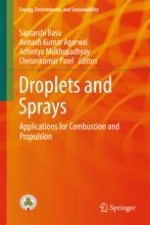This book focuses on droplets and sprays relevant to combustion and propulsion applications. The book includes fundamental studies on the heating, evaporation and combustion of individual droplets and basic mechanisms of spray formation. The contents also extend to the latest analytical, numerical and experimental techniques for investigating the behavior of sprays in devices like combustion engines and gas turbines. In addition, the book explores several emerging areas like interactions between sprays and flames and the dynamic characteristics of spray combustion systems on the fundamental side, as well as the development of novel fuel injectors for specific devices on the application side. Given its breadth of coverage, the book will benefit researchers and professionals alike.
